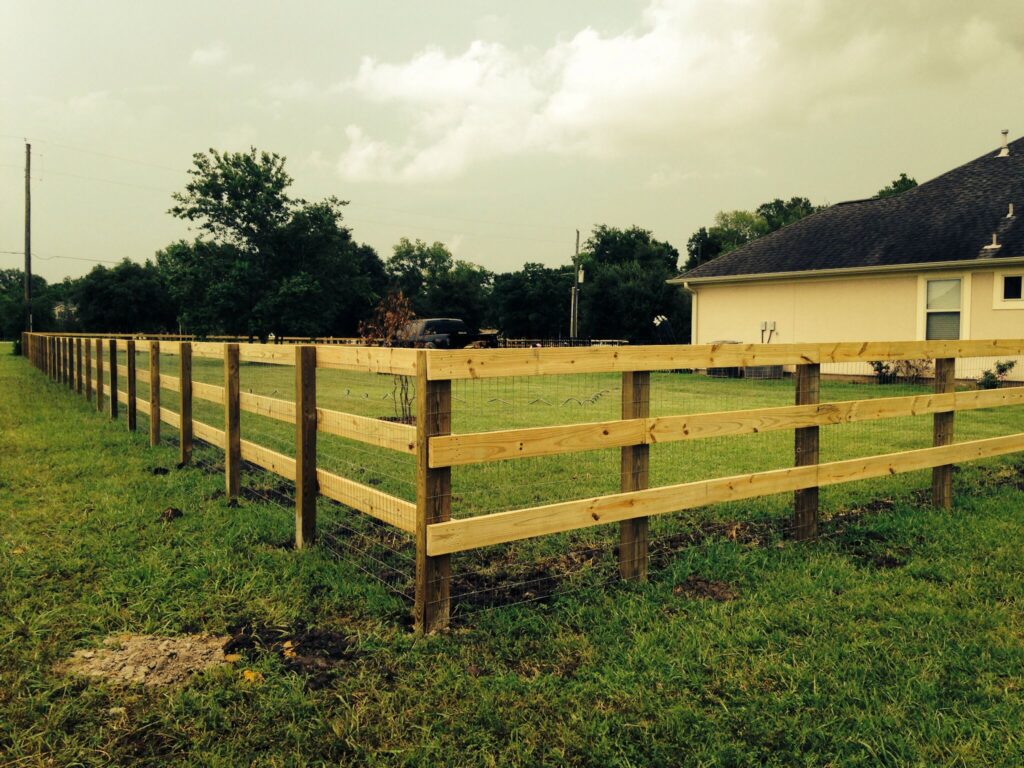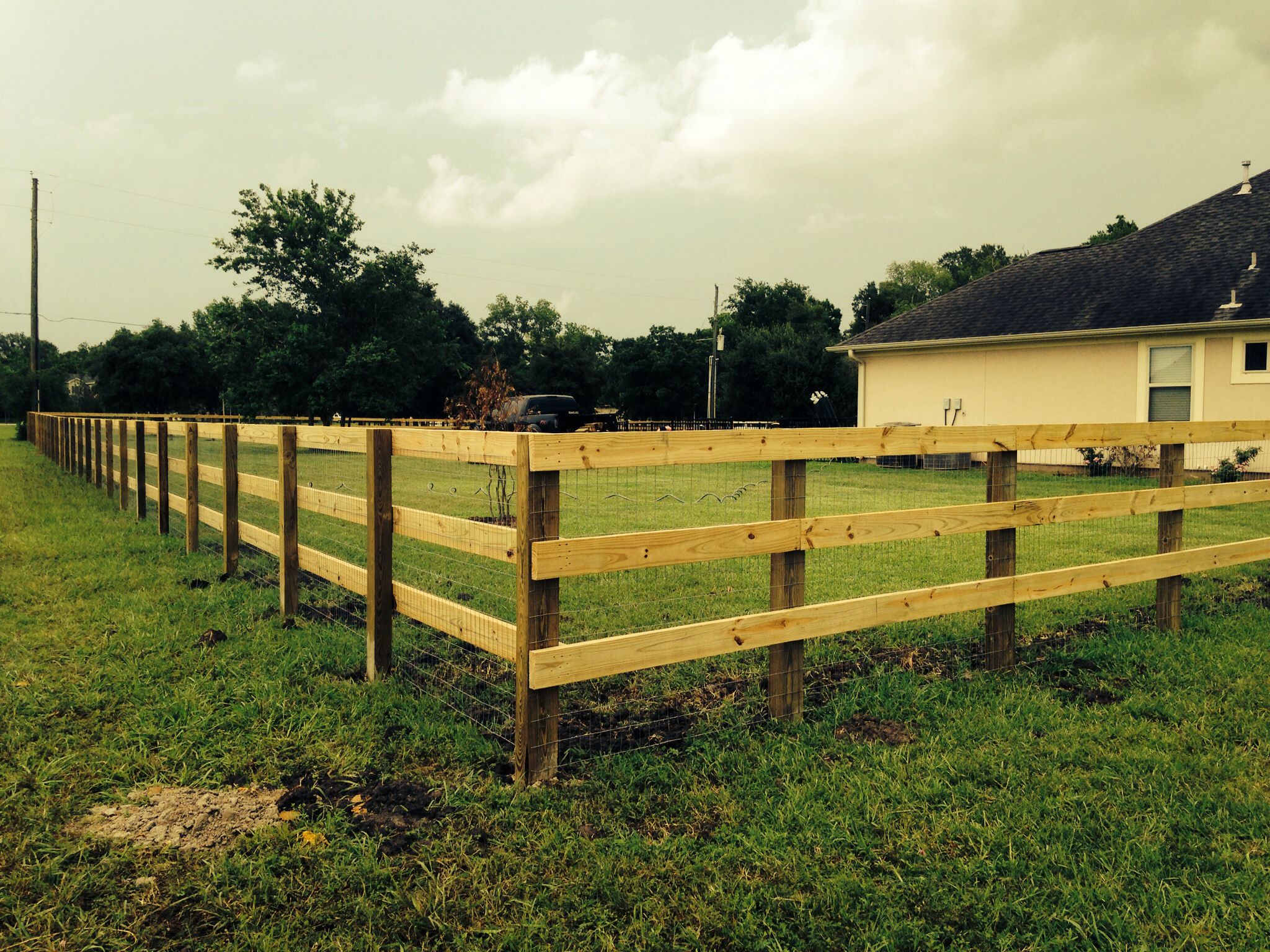
The Enduring Appeal of the Three Rail Fence: History, Function, and Modern Applications
The three rail fence, a seemingly simple structure, holds a significant place in agricultural history and continues to be a popular choice for property owners today. Its enduring appeal stems from its functionality, aesthetic charm, and relatively straightforward construction. From defining property lines to containing livestock, the three rail fence offers a blend of practicality and visual appeal that few other fencing options can match. This article delves into the history, function, and modern applications of this iconic fence, exploring why it remains a relevant and respected choice in the 21st century.
A Glimpse into the History of the Three Rail Fence
The origins of the three rail fence can be traced back to early American settlements. As settlers moved westward, they needed a quick and efficient way to enclose land for farming and ranching. Traditional stone walls were time-consuming to build, and readily available timber proved to be a more practical solution. The three rail fence emerged as a durable and cost-effective option, utilizing readily available wood and a simple design that could be easily replicated. These early fences were often constructed from split rails, interlocked at the posts to create a sturdy barrier. The design was simple, typically consisting of three horizontal rails supported by vertical posts. The spacing between the rails was designed to contain livestock while minimizing the amount of lumber required. This practical approach to fencing quickly gained popularity, becoming a defining feature of the American landscape.
Over time, the design and materials used in three rail fences have evolved. While wood remains a common choice, alternative materials like vinyl and composite have emerged, offering increased durability and reduced maintenance. However, the fundamental design – three horizontal rails supported by posts – has remained largely unchanged, a testament to its enduring functionality.
The Functionality of the Three Rail Fence: More Than Just Aesthetics
While the aesthetic appeal of the three rail fence is undeniable, its functionality is equally important. The primary function of this type of fence is to provide a barrier, whether it’s to contain livestock, define property lines, or enhance security. The height and spacing of the rails can be adjusted to suit specific needs. For example, fences designed to contain horses often have higher rails and closer spacing than those used to delineate property boundaries. A well-constructed three rail fence can effectively deter animals from crossing property lines and provide a safe enclosure for livestock.
Beyond containment, the three rail fence also offers a degree of security. While it may not be as impenetrable as a solid wall, it can still deter trespassers and provide a visual deterrent. The open design allows for visibility, which can be beneficial in deterring unwanted activity. Furthermore, the fence can be combined with other security measures, such as cameras and alarms, to enhance its effectiveness. This is a popular choice for horse farms and rural properties where security is a concern.
The three rail fence also plays a role in enhancing property value. A well-maintained fence can significantly improve the curb appeal of a property, making it more attractive to potential buyers. The classic design complements a variety of architectural styles, adding a touch of rustic charm and sophistication. Whether you’re looking to sell your property or simply enhance its aesthetic appeal, a three rail fence can be a worthwhile investment.
Materials and Construction: Choosing the Right Options
The longevity and performance of a three rail fence depend heavily on the materials used and the quality of construction. Wood is the traditional choice, offering a natural and aesthetically pleasing look. Common wood species include pine, cedar, and pressure-treated lumber. Pine is an affordable option, but it requires regular maintenance to prevent rot and decay. Cedar is naturally resistant to decay and insects, making it a more durable choice. Pressure-treated lumber is treated with chemicals to protect it from decay, offering a long-lasting and low-maintenance option.
In recent years, alternative materials like vinyl and composite have gained popularity. Vinyl fences are virtually maintenance-free and resistant to rot, insects, and weathering. They are available in a variety of colors and styles, allowing you to customize the look of your fence. Composite fences are made from a combination of wood fibers and plastic, offering a blend of durability and aesthetic appeal. They are also resistant to rot, insects, and weathering, and require minimal maintenance. When choosing materials, consider your budget, aesthetic preferences, and maintenance requirements.
Construction Considerations
Proper construction is essential for ensuring the stability and longevity of your three rail fence. The posts should be set deep enough to provide adequate support, typically at least two feet below the frost line. The spacing between the posts should be consistent, usually between 8 and 10 feet. The rails should be securely fastened to the posts using nails, screws, or bolts. It’s also important to ensure that the fence is properly aligned and level. If you’re not comfortable with DIY projects, it’s best to hire a professional fence contractor to ensure that the job is done correctly. This ensures not only a beautiful fence, but also one that will last.
Modern Applications of the Three Rail Fence
While the three rail fence has a rich history, it remains a relevant and versatile fencing option in modern times. Its applications extend beyond traditional agricultural settings, encompassing residential, commercial, and recreational properties. Here are some common modern applications:
- Residential Properties: The three rail fence is a popular choice for homeowners looking to enhance the curb appeal of their property. It can be used to define property lines, create a decorative border, or enclose a garden or pool area.
- Equestrian Facilities: Horse farms and equestrian centers rely on three rail fences to contain horses and provide a safe and secure environment. The height and spacing of the rails can be customized to suit the needs of different breeds and disciplines.
- Agricultural Properties: Farmers and ranchers continue to use three rail fences to contain livestock, protect crops, and delineate pastureland. The durable construction and cost-effective design make it a practical choice for large-scale agricultural operations.
- Commercial Properties: Businesses often use three rail fences to enhance the aesthetic appeal of their property and create a welcoming environment for customers. It can be used to define parking areas, create outdoor seating areas, or simply add a touch of rustic charm.
- Parks and Recreational Areas: Parks and recreational areas often use three rail fences to define trails, protect sensitive areas, and provide a safe barrier for visitors. The open design allows for visibility, while the sturdy construction ensures durability.
The Future of the Three Rail Fence
As technology advances and new materials emerge, the three rail fence is likely to continue to evolve. We can expect to see more innovative designs and materials that offer increased durability, reduced maintenance, and enhanced aesthetic appeal. Smart fencing systems, equipped with sensors and monitoring devices, may also become more common, providing real-time data on fence integrity and security. Despite these advancements, the fundamental principles of the three rail fence – simplicity, functionality, and aesthetic appeal – are likely to remain unchanged. It’s a design that has stood the test of time, and it’s likely to continue to do so for many years to come.
The three rail fence represents more than just a barrier; it’s a symbol of heritage, hard work, and the enduring connection between humans and the land. Its timeless design and practical functionality ensure its continued relevance in a rapidly changing world. Whether you’re a homeowner, farmer, or business owner, the three rail fence offers a versatile and aesthetically pleasing solution for defining boundaries, enhancing security, and adding a touch of rustic charm to your property. [See also: Different Types of Fencing Materials] [See also: How to Install a Fence Post] [See also: Fence Maintenance Tips]

